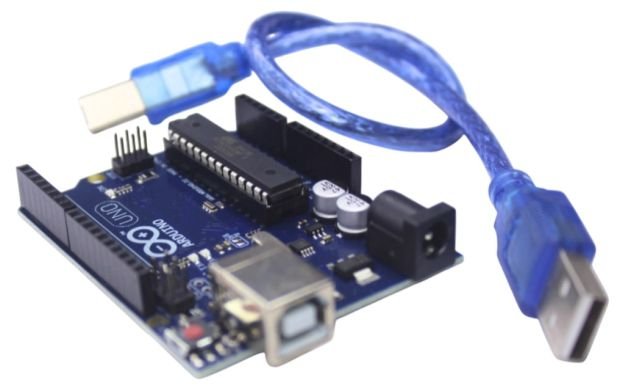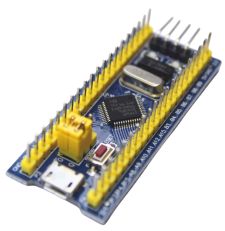Detailed Description:
The Arduino UNO R3 Development Board is the quintessential tool for anyone looking to enter the world of electronics and programming. As the most widely recognized and supported microcontroller board, the Uno R3 is the perfect foundation for beginners, students, and hobbyists. At its core lies the powerful and versatile ATmega328P microcontroller, which provides the processing power needed for a vast range of projects. A key feature of this specific model is the DIP (Dual In-line Package) version of the ATmega328P, which is socketed, allowing for easy replacement of the chip if it is damaged, or for use in a custom circuit after a project has been prototyped.
The Uno R3's robust technical specifications make it incredibly versatile. It features 14 digital I/O pins (of which 6 can provide PWM output) and 6 analog input pins, providing ample connectivity for a wide variety of sensors, actuators, and other electronic components. With a clock speed of 16 MHz, the board offers efficient performance for real-time applications. It is easily programmed using the open-source Arduino IDE, which supports a simplified C++ language and provides a massive library of resources and example code. The board can be powered via a USB connection or an external power supply, offering flexibility for both prototyping and final deployment in robotics, home automation, and IoT projects.
The Arduino UNO R3 (DIP Edition) is an open-source electronics platform featuring a removable ATmega328P-PU DIP chip, which makes replacing or upgrading the microcontroller easy. With robust USB programming, onboard voltage regulators, and standard I/O pin headers, it serves as the go-to board for prototyping and development.
It supports programming via the Arduino IDE and is fully compatible with most Arduino shields, making it an excellent choice for building automation systems, robots, sensors, and interactive gadgets.
The board features a USB Type-B interface, reset button, power jack, ICSP header, and crystal oscillator. It can be powered via USB or an external adapter (7V–12V).
Key Features:
-
Microcontroller: ATmega328P-PU (DIP Socket)
-
Operating Voltage: 5V
-
Input Voltage (recommended): 7V–12V
-
14 Digital I/O Pins (6 PWM outputs)
-
6 Analog Input Pins
-
Clock Speed: 16 MHz
-
Flash Memory: 32 KB (0.5 KB used by bootloader)
-
SRAM: 2 KB, EEPROM: 1 KB
-
USB Programming with Type-B Cable
-
Fully compatible with Arduino IDE & libraries
-
Replaceable DIP IC – ideal for learning embedded systems
Technical Specifications:
| Specification |
Details |
| Microcontroller |
ATmega328P-PU (DIP 28-pin) |
| Operating Voltage |
5V DC |
| Input Voltage |
7–12V (via DC jack) |
| I/O Pins |
14 Digital, 6 Analog |
| PWM Pins |
6 (D3, D5, D6, D9, D10, D11) |
| Communication |
UART, SPI, I2C |
| USB Interface |
USB Type-B (for programming & power) |
| Clock Speed |
16 MHz Quartz Crystal |
| Board Dimensions |
~68.6mm x 53.4mm |
| Weight |
~25g |
How to Use:
-
Connect the board to PC via USB Type-B cable
-
Install Arduino IDE and select “Arduino UNO” board
-
Load sample code (e.g., Blink) and click Upload
-
Use sensors, actuators, and shields to build projects
Applications:
-
Robotics and automation projects
-
IoT and sensor-based systems
-
STEM education and student engineering kits
-
Home automation and lighting control
-
Prototyping smart gadgets or wearable devices
-
Embedded system development training
Package Includes:










































